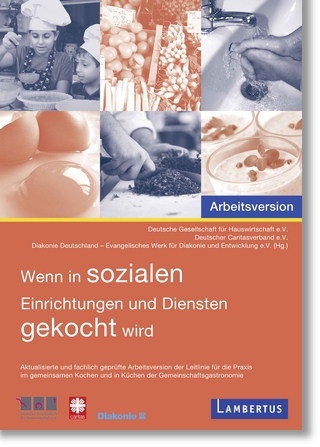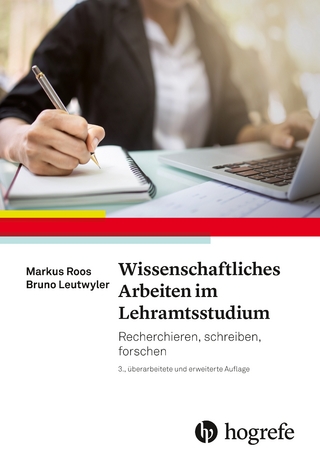
Challenges of Differentiation in a Primary CLIL Classroom
Bachelor + Master Publishing (Verlag)
978-3-95993-078-9 (ISBN)
Text Sample:
Chapter: 2.3 Differentiation in CLIL Settings
As shown in the two previous chapters (2.1 & 2.2), CLIL demands the teacher to adjust the lesson according to various factors (e.g. relation between content, communication, cognition and culture; learners' individual and cultural background and development of skills; planning procedures) making differentiation essential.
According to Hoenselaar et al. (2014: 3), this is notable, since ''pupils learn more effectively when their individual needs are taken into account''. Respecting these individual demands, the teacher can adjust a lesson in subject matter, cognitive processing, and output or product (Hoenselaar et al., 2014: 3).
Regarding subject matter, it is the question of what students must understand (Hoenselaar et al., 2014: 3). Moreover, to be able to provide students with more challenging assignments educators need to concern the students' previous knowledge (Korosidou and Griva, 2014: 241). With regard to Tomlinson (2001, cited in Hoenselaar et al., 2014: 3), differentiation in content is guaranteed by providing the students with different resources (e.g. text and content based material). Burmeister and Ewig (2010: 104) indicate, that this material should ''be self-explanatory, with dear illustrations that 'speak for themselves' [...] giv[ing] the students the chance to explore the content on their own or in groups''.
Furthermore, the educator should prepare scenarios that force students to think critically, and enable them to seek creative solutions to a problem (Hoenselaar et al., 2014: 3). According to Welsh Assembly Government (2010: 6), ''[o]ne of the overriding features of improving the quality of thinking and developing assessment for learning is the importance of establishing effective group work in the classroom''. To manage effective group work, the educator has to consider the group size being affected by ''the task, the learners and their ability to work in larger groups [and] the 6
classroom itself'' (Welsh Assembly Government (2010: 8). Moreover, the educator may decide on social roles within a group formation such as ''chairperson, ideas person, ideas developer, questioner, summariser, observer, envoy'' (Welsh Assembly Government, 2010: 10) and establish simple ground rules for discussions such as turn taking and listening to co-students while looking at them (Welsh Assembly Government (2010: 9).
Besides offering differentiated input and deciding on strategies in social forming, the teacher must consider the students' outcome to be measured as part of a lessons' reinforcement to reveal their understanding of the processed material, as well as their approaches to solve a problem (Hoenselaar et al., 2014: 3). Here, it is important that the teacher gives students the chance ''to show their understanding in multiple ways, not only through written products but also for example through the production of graphic organizers, art, performance, demonstrations, models, posters'' (Chamot and O'Malley, 1994, cited in Hoenselaar et al., 2014: 3). Likewise, Griva and Semoglou (2013, cited in Korosidou and Griva, 2014: 241) note that teachers ''presenting information in a multisensory way and multimodal classroom environment [...], mostly by using the new technologies for educational purposes (video clips, power point presentations, web-quests, interactive materials on English websites etc.), could provide students with ample and stimulating input''.
Meyer (2010, cited in Korosidou and Griva, 2014: 241) underlines the importance of this very input to be authentic in matters of a real life setting or problem, and thus meaningful, but challenging as well being ''within the pupils' reach'' (Coyle et al. (2010: 29, cited in Gjendemsjø, 2013: 21).
Nonetheless, students may rely on teachers' support to achieve a higher educational level. Coyle et al. (2010: 29, cited in Gjendemsjø, 2013: 21) refers to Vygotsky's 'zone of proximal development' (ZPD) indicati
| Erscheinungsdatum | 08.03.2019 |
|---|---|
| Reihe/Serie | Bachelorarbeit |
| Sprache | englisch |
| Maße | 155 x 220 mm |
| Gewicht | 79 g |
| Themenwelt | Sozialwissenschaften ► Pädagogik ► Allgemeines / Lexika |
| Schlagworte | CLIL • Content and Language Integrated Learning • Differentiation • Primary school • Teaching |
| ISBN-10 | 3-95993-078-X / 395993078X |
| ISBN-13 | 978-3-95993-078-9 / 9783959930789 |
| Zustand | Neuware |
| Haben Sie eine Frage zum Produkt? |
aus dem Bereich


